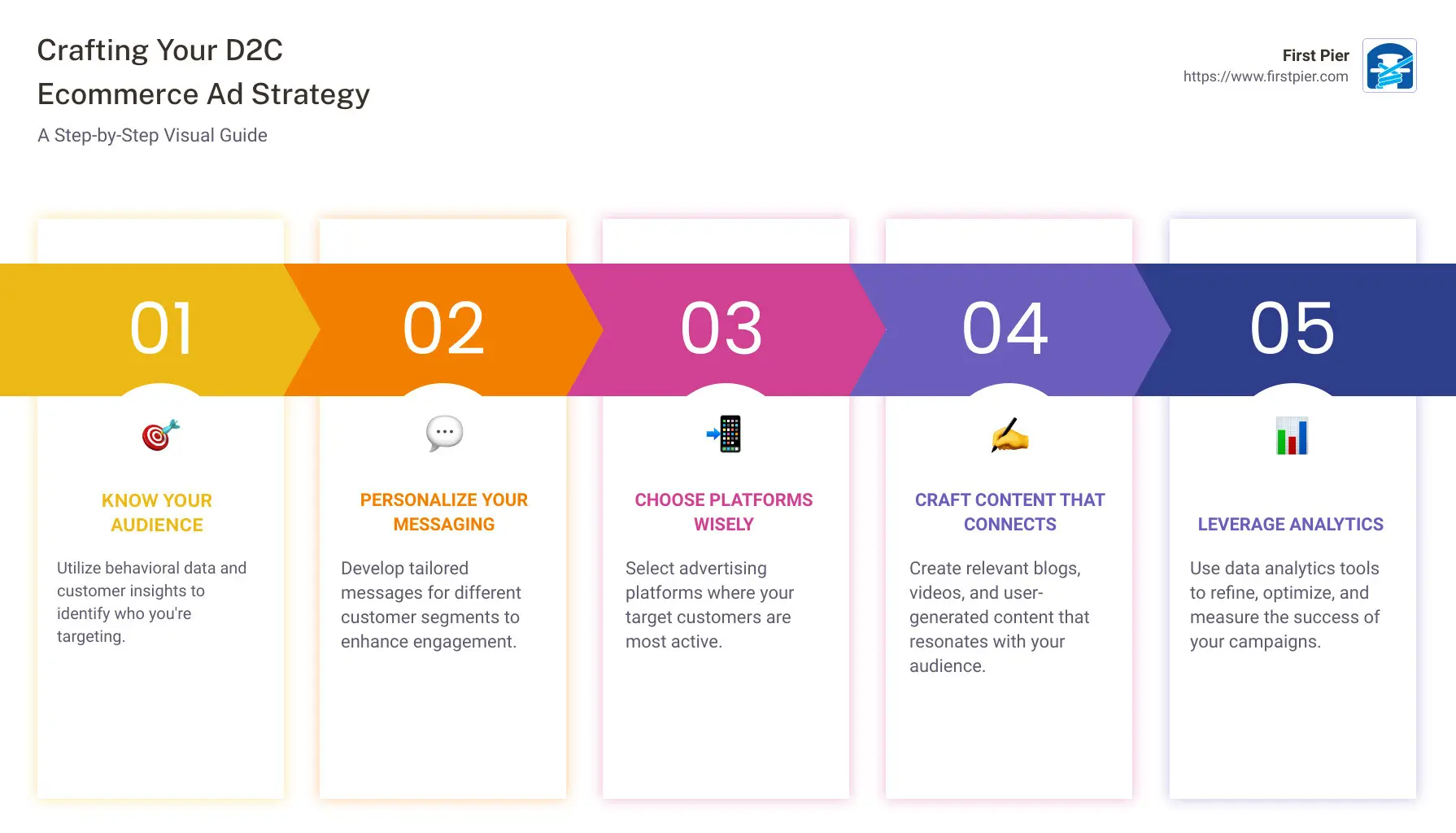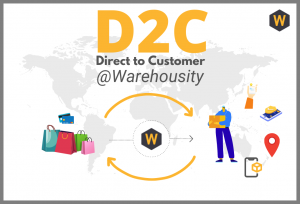D2C Ecommerce Agency vs. Traditional Retail Partner: Which Should You Choose?
Exploring the Prospective of D2C Ecommerce: A Comprehensive Overview for Organizations
The D2C ecommerce design offers a substantial change in exactly how brands involve with consumers. It makes it possible for firms to bypass standard retail channels, cultivating much deeper connections and potentially enhanced earnings margins. Nonetheless, this strategy is not without its intricacies. Recognizing the subtleties of D2C ecommerce is vital for brand names aiming to thrive. What methods can they adopt to browse this evolving landscape effectively? The solutions may redefine their business approaches.
Understanding the D2C Ecommerce Design

Key Perks of D2C Ecommerce for Brands
The D2C ecommerce design uses brand names considerable benefits, specifically regarding enhanced profit margins. By eliminating middlemans, firms can retain a bigger share of sales revenue. In addition, this direct partnership with consumers promotes improved brand loyalty, encouraging repeat purchases and lasting interaction.
Increased Revenue Margins

Boosted Brand Loyalty
Building on the monetary advantages of D2C ecommerce, boosted brand name commitment becomes an additional crucial benefit for business involving directly with consumers. By establishing a straight connection, brand names can cultivate much deeper partnerships with their consumers, getting understandings right into habits and preferences. This direct communication permits for even more tailored advertising approaches, which resonate highly with consumers. Furthermore, brand names have the chance to regulate their messaging and client experience, strengthening brand values and constructing count on. When clients feel a personal link, they are more likely to return, advocate for the brand, and take part in area interaction. Eventually, boosted brand commitment not only drives repeat acquisitions but additionally cultivates a passionate client base, more strengthening a brand name's position out there.
Challenges Encountered by D2C Brands
D2C brand names run into several considerable difficulties that can influence their success. Inventory monitoring issues can cause stock shortages or excess, complicating operations and consumer satisfaction. Additionally, marketing budget restraints commonly restrict the ability to properly get to and engage target audiences.
Supply Management Issues
Effective supply management offers a formidable obstacle for numerous brands running in the direct-to-consumer (D2C) area. These brand names typically face changing need, which can result in overstock or stockouts, eventually affecting consumer complete satisfaction and revenue. Furthermore, the absence of advanced supply radar can result in disparities between actual supply degrees and reported data, making complex order fulfillment. The varied series of products D2C brand names normally provide also makes complex inventory administration, as variations in colors, sizes, and styles require more meticulous oversight. Several D2C businesses might battle with minimal warehousing capacities, leading to inefficient usage of area and sources. Consequently, effective supply management continues to be a vital hurdle for D2C brands intending for sustainable growth and operational efficiency.
Marketing Spending Plan Constraints
Maneuvering advertising budget plan restrictions is a substantial challenge for numerous direct-to-consumer (D2C) brands. Limited financial resources typically restrict these business' capability to spend in comprehensive advertising and marketing strategies, leading to minimized visibility in an affordable market. D2C brand names often come to grips with the requirement to take full advantage of return on financial investment (ROI) while targeting specific target markets efficiently. This challenge is exacerbated by increasing expenses in digital advertising and the necessity to assign funds across multiple channels, consisting of social networks, search engines, and e-mail marketing. Lots of D2C brand names must introduce affordable advertising and marketing services, leveraging natural growth approaches and influencer partnerships. Inevitably, successfully steering these budget plan constraints is essential for maintaining development and achieving long-lasting success in the advancing ecommerce landscape.
Methods for Building a Successful D2C Ecommerce Organization
As customers significantly seek straight connections with brands, establishing a successful D2C ecommerce business requires a critical approach that prioritizes client involvement and trust fund. One reliable approach is to create compelling brand name stories that resonate with target market, cultivating emotional connections. Making use of social media sites systems can enhance presence and promote two-way interaction, permitting brands to involve straight with customers.Moreover, individualized experiences via tailored marketing efforts can significantly enhance client retention and commitment. Applying commitment programs and offering special offers can even more incentivize repeat purchases.Streamlining the buying procedure is necessary, making certain an user-friendly interface that improves the purchasing experience. Furthermore, transparent communication pertaining to delivery and returns develops trust fund and motivates consumer confidence.Finally, actively looking for consumer responses and reacting to it shows a dedication to enhancement and customer fulfillment, important aspects in the competitive D2C landscape.
Leveraging Innovation for Enhanced Customer Experience
In today's competitive D2C ecommerce landscape, modern technology plays a critical role in go right here shaping consumer experiences. Businesses increasingly use sophisticated devices such as fabricated knowledge, chatbots, and customized formulas to improve communications and simplify the buying process. By incorporating these modern technologies, brand names can offer customized item suggestions based upon individual preferences and shopping actions, promoting a more appealing experience.Moreover, receptive internet site styles and mobile applications guarantee that consumers can access services seamlessly across numerous gadgets. Enhanced repayment solutions, consisting of digital budgets and one-click check outs, additionally streamline deals, making it much easier for consumers to make purchases.Data analytics likewise allows services to gather understandings right into consumer behavior, permitting for constant renovation of offerings and solutions. In general, leveraging innovation not just enhances customer contentment however likewise cultivates commitment, eventually driving long-term success in the D2C ecommerce sector.
Advertising Tactics to Drive D2C Sales
Exactly how can brands successfully record the focus of consumers in a saturated market? To prosper in the direct-to-consumer (D2C) landscape, brands need to use targeted marketing strategies. Utilizing social networks systems, brand names can engage customers via interactive web content, influencer partnerships, and user-generated posts. Individualized e-mail campaigns can additionally foster a sense of connection, supplying customized promos based upon customer actions and preferences.Moreover, storytelling plays a crucial duty in setting apart a brand name's narrative, making it relatable and unforgettable. Brand names must spend in search engine optimization (SEO) to boost presence, ensuring their products are quickly discoverable online. Furthermore, leveraging information analytics permits companies to refine their marketing techniques and recognize consumer trends much better. Ultimately, a multi-channel strategy that incorporates imagination with data-driven insights can substantially boost D2C sales, enabling brand names to attract attention in a crowded market.
Future Trends in D2C Ecommerce
With the rapid evolution of innovation and consumer choices, the future of D2C ecommerce is poised for considerable change. Arising trends show a shift in the direction of hyper-personalization, where brands utilize information analytics to customize offerings to private customer demands. This personalization improves consumer experiences, cultivating loyalty and engagement.Moreover, sustainability is becoming a crucial factor, with customers progressively favoring brand names that prioritize environmentally friendly methods - D2C Ecommerce Agency. Firms are expected to adopt clear supply chains and sustainable products to satisfy this demand.The combination of synthetic knowledge and enhanced truth will furthermore revolutionize the purchasing experience, allowing consumers to picture items in their settings prior to purchase. On top of that, social business is anticipated to expand, as systems like Instagram and TikTok assist in smooth shopping experiences straight within social media.These fads jointly signify a vibrant future for D2C ecommerce, highlighting customer-centric strategies and cutting-edge modern technologies that redefine consumer interactions
Often Asked Concerns
What Industries Advantage Most From D2C Ecommerce?
The existing inquiry highlights markets that thrive via direct-to-consumer (D2C) ecommerce. Extremely, style, charm, electronics, and food industries take advantage of D2C models to enhance brand loyalty, enhance consumer Read Full Report connections, and enhance revenue margins successfully.
How Do Shipping Costs Affect D2C Pricing Techniques?
Delivering expenses substantially affect D2C prices strategies. Businesses have to balance these costs with competitive rates, considering client expectations and earnings margins. Efficient management of shipping can boost client fulfillment and drive sales in direct-to-consumer designs.
What Payment Alternatives Should D2C Services Offer?
D2C organizations must offer varied settlement options, consisting of credit/debit cards, digital budgets, and purchase currently, pay later on services. This selection enhances client benefit, increases conversion prices, and satisfies various consumer preferences in the on the internet shopping landscape.
Exactly How Can D2C Brands Handle Customer Returns Properly?
D2C brands can handle customer returns successfully by implementing straightforward return policies, providing pre paid shipping labels, and ensuring prompt refunds (D2C Ecommerce Agency). Clear interaction and structured procedures improve consumer fulfillment and urge repeat business
What Legal Considerations Exist for D2C Ecommerce Workflow?
Legal considerations for D2C ecommerce operations consist of compliance with consumer security legislations, data personal privacy policies, intellectual residential property civil liberties, and taxation requirements. Brands should browse these intricacies to avoid legal risks and ensure smooth procedures. By removing middlemans, D2C brand names can offer competitive pricing and foster a more intimate connection with their customers.The D2C version is identified by its reliance on digital platforms, allowing brand names to utilize social media, on the internet industries, and their very own internet sites to involve with customers straight. D2C ecommerce facilitates the collection of important customer information, making it possible for brands to tailor their offerings and advertising and marketing strategies properly, ultimately driving sales and enhancing margins. Additionally, brands have the opportunity to control their messaging and consumer experience, enhancing brand name values and developing depend on. As customers progressively seek direct connections with brand names, developing a successful D2C ecommerce business requires a strategic approach that focuses on customer interaction and trust. D2C brand names more information can manage customer returns effectively by implementing straightforward return plans, providing pre-paid delivery tags, and ensuring timely refunds.